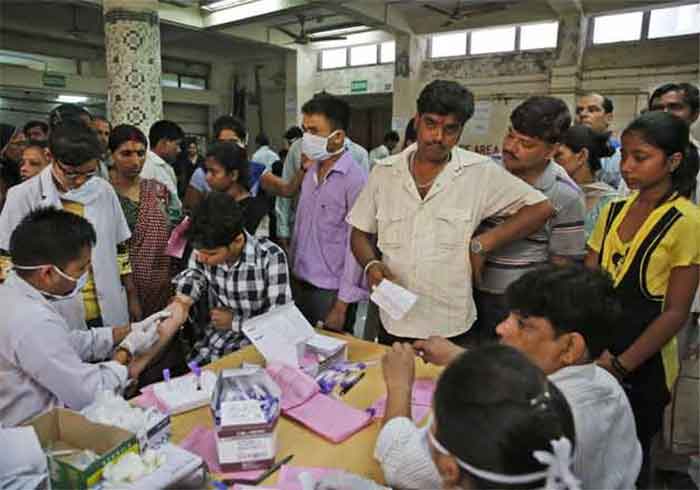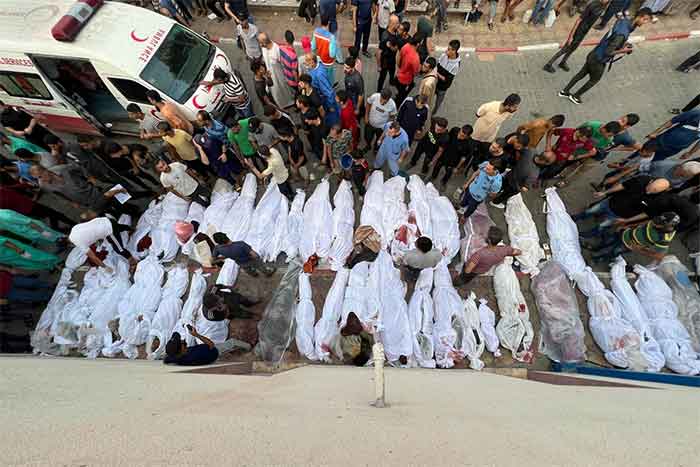
The never ending queues outside the clinics, jam packed hospitals, and the backlogs of the surgeries, this is the typical scene outside any hospital in India. In order for a nation to conquer any health emergency and to avoid such situations to crop up in future, the first and foremost heed should be paid to the healthcare personnel. India’s frail health infrastructure has been crippled by the ongoing COVID-19 pandemic. However, in the heat of the crisis the elephant in the room has not been given enough attention. The per capita ratio of doctors in India.
The World Health Organization (WHO) prescribes the ratio of 1:1000, that is, one doctor for a population of 1000 individuals. India comprises a population of 1,380 million people. According to the most recent data provided by the Health Ministry in 2019, we have an active population of 1.16 million doctors, of which only 80%, or 0.9 million are practicing. Therefore, this leaves us with the ratio of 0.68 doctors for every 1000 people, which is way below the WHO recommended criteria. According to the statistics, India is in a dire need of 4.3 lakh additional doctors to meet the WHO requirements.
As per the current annual output of approximately 80,000 doctors, it will take at least six years for India to meet the WHO standards. This is further complicated as the figures are not even uniform throughout the nation. States like Maharashtra, Kerala, Andhra Pradesh, Karnataka, Tamil Nadu and Punjab already have more than one doctor per thousand population. However, the situation in other states like Bihar, Madhya Pradesh, Uttar Pradesh, Jharkhand and Chhattisgarh is dreadful. Shockingly, figures suggest that Bihar will take 56 years to achieve the WHO standards and Jharkhand 87 years considering the current rate at which their medical colleges are graduating doctors. In addition, the problem does not end here. States that even meet the WHO standards comprise few districts with poor health indices, as doctors tend to congest the cities.
Now, let us throw some light on the potential reasons responsible for the significant lack of healthcare professionals as well as the health inequality among rural and urban India. As per the research, the major reason is the dearth of qualified health personnel impeding the nation’s ability to achieve healthcare. Much focus has been on the development of physical infrastructure, constructing hospitals, and purchase of new equipment instead of putting in efforts in establishing the health professional capacity. Not only is there a paucity of health workers, they are also stuffed in the urban areas, completely depriving the rural regions of standard healthcare. Approximately 70% of the total Indian population resides in rural regions, where only 3% of the total doctors practice. Hence, this goes without saying that rural areas are in the greatest need for medical professionals. However, the irony is such that the greatest shortage is seen in the said terrain. One of the main reasons for the acute shortage of skilled medical workforce in rural India is that the doctors are not willing to pursue their postings as they are not incentivized. There is no job as well as personal security. There are insufficient opportunities for effective work growth, access to fundamental health resources and ways of performing their duties as a health practitioner. Moreover, India focuses on tertiary care in a rural environment which is further aided by a lack of basic health facilities, rather than primary and secondary centers.
What can be the viable solutions to the problem that needs immediate addressing. For instance, let us talk about the Tamil Nadu model. Each hospital district was turned into a medical college hospital. In addition to increasing the number of undergraduate seats, the number of postgraduate seats and government jobs were proportionately raised to outside urban facilities for specialists. Most specialists are unwilling to work outside major cities, especially when they fear that they would not be able to use their talents and abilities efficiently. This leads to an overwhelming number of urban practitioners. This problem can be overcome by building good quality regional hospitals and offering fantastic facilities for a skilled person to fully perform his or her skills without worrying about the provision of medicines, staff meetings, operating theatre or any other burdensome administrative work.
If done effectively in rest of the geographical terrains of India, this would not only bridge the gap between the number of doctors per population, at the same time, it would significantly decrease the health inequalities in urban and rural setup. Moreover, it will decrease the dependency on the private hospitals which burn a hole into the pockets of the middle class and are inaccessible to the poor. Furthermore, the overcrowding issues at the existing public hospitals would be solved to an extent. Lastly, fatalities can be minimised via easier access and better use of resources for health care.
In the 2009 swine flu outbreak, we witnessed the catastrophic scenario. Once again, the current COVID-19 pandemic has highlighted the actuality of the healthcare infrastructure. India still has a long way to go to satisfy the WHO doctor-per-population requirements and thereby improve the overall health equality situation. Timely solutions are required in the form of new policies and their immediate execution. Unless the government invests in improved public health infrastructure and in more doctors, we will continue to revive – maybe even lethal and more severe – the repercussions of similar outbreaks in the future.
REFERENCES :
1. 80% diseases can be nipped with primary healthcare [Internet]. ET Healthworld.com. 2021 [cited 8 July 2021]. Available from: https://health.economictimes.indiatimes.com/news/industry/80-diseases-can-be-nipped-with-primary-healthcare/82828011
2. Byatnal A. Shortage of health care workers plagues India’s fight against COVID-19 [Internet]. devex. 2020 [cited 10 July 2021]. Available from: https://www.devex.com/news/shortage-of-health-care-workers-plagues-india-s-fight-against-covid-19-98108
3. Debroy S. 1 Doctor For 483 People: India’s Medical Services Need An Urgent Revamp [Internet]. YKA. 2019 [cited 8 July 2021]. Available from: https://www.youthkiawaaz.com/2019/11/absenteeism-of-healthcare-professionals-in-rural-india/
4. Doctor-patient ratio in India less than WHO-prescribed norm of 1:1000: Govt [Internet]. ET Healthworld.com. 2019 [cited 8 July 2021]. Available from: https://health.economictimes.indiatimes.com/news/industry/doctor-patient-ratio-in-india-less-than-who-prescribed-norm-of-11000-govt/72135237
5. Here is why India has a glut and acute shortage of doctors [Internet]. The Times of India. 2019 [cited 8 July 2021]. Available from: https://timesofindia.indiatimes.com/india/here-is-why-india-has-a-glut-and-acute-shortage-of-doctors/articleshow/72004397.cms
6. Population of India [Internet]. Statistics Times. 2020 [cited 8 July 2021]. Available from: https://statisticstimes.com/demographics/country/india-population.php#:~:text=The%20total%20population%20in%20India,in%20the%20world%20behind%20China
7. Sehgal S. Decoding the shortage of doctors in India [Internet]. HealthAnalytics Asia. 2020 [cited 7 July 2021]. Available from: https://www.ha-asia.com/decoding-the-shortage-of-doctors-in-india/
Dr. Sameeksha Dhillan – I am a dentist who is currently pursuing a master’s degree in Public Health from Manipal University. [email protected]

















































